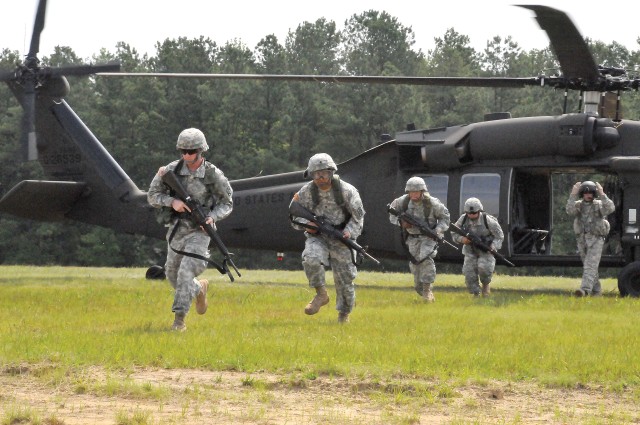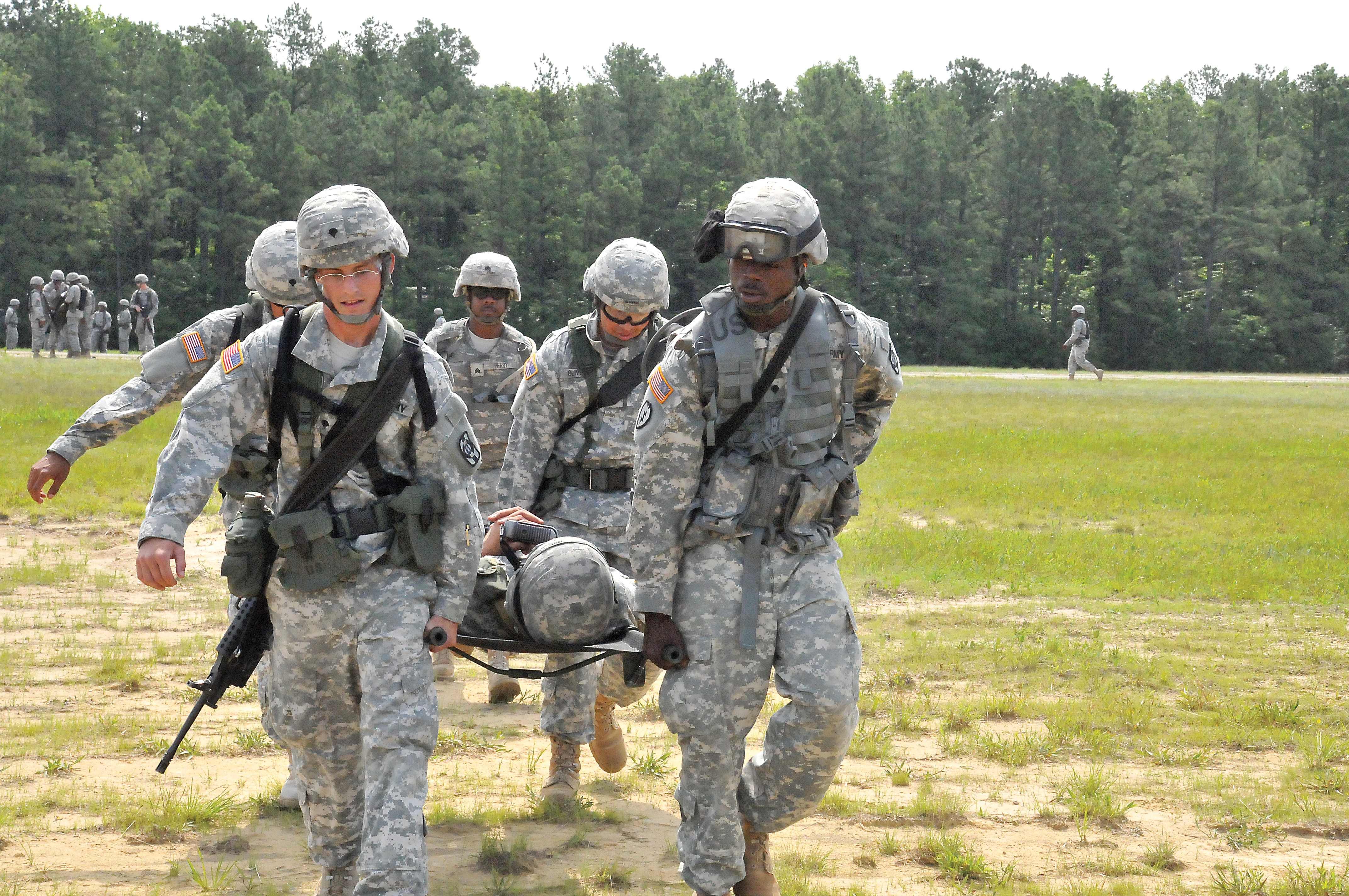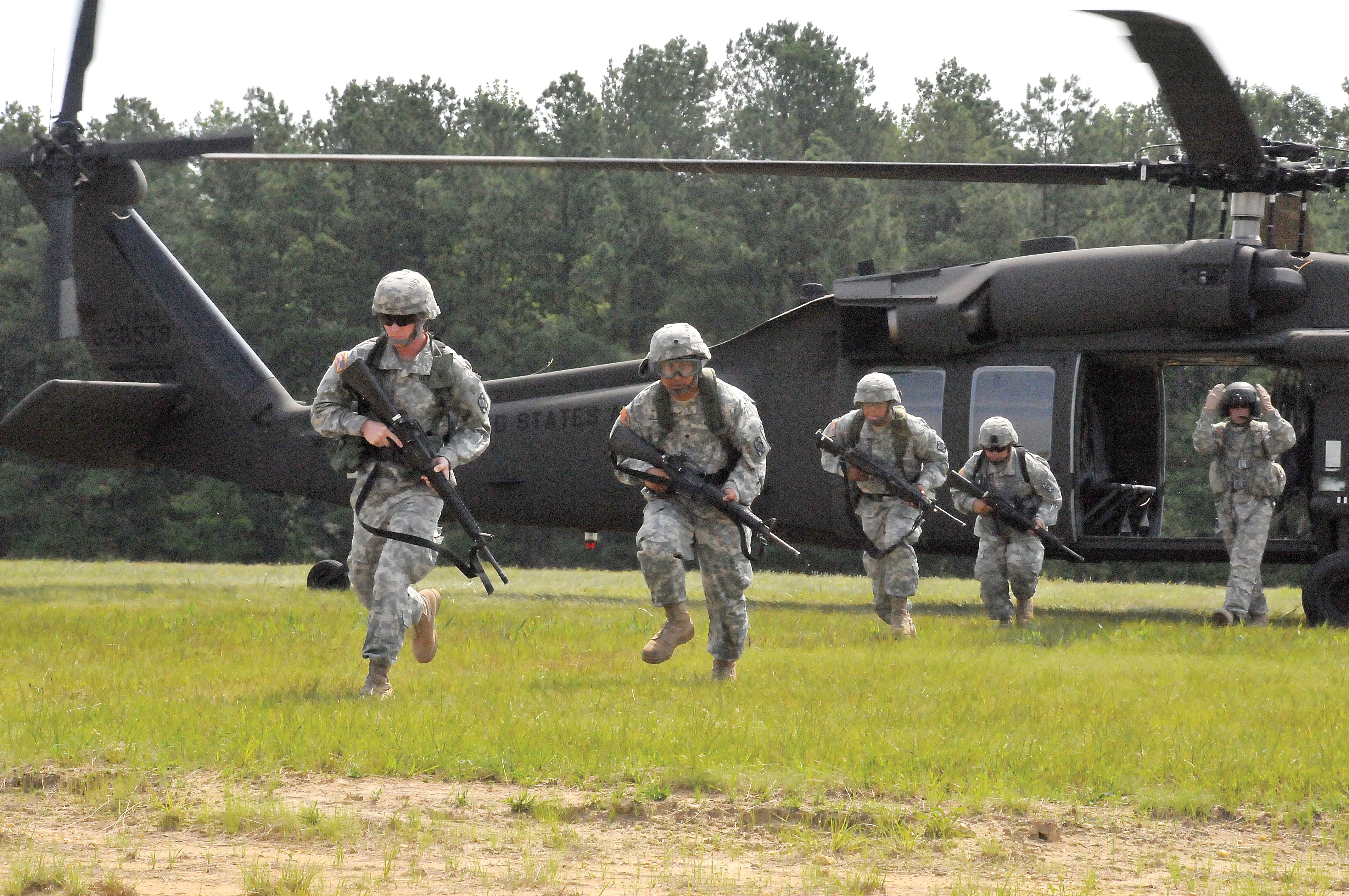FORT LEE, Va. (July 2, 2009) -- Training for the 109th Quartermaster Company, 240th QM Battalion, 49th QM Group, was anything but typical June 25 at McLaney Drop Zone.
Seventy-six members of the unit spent the morning conducting casualty evacuation training with the help of the Virginia National Guard's Co. B, 2nd/224th Aviation Battalion stationed at Richmond International Airport.
When Sgt. 1st Class Juan Riverarios took the reins as company operations sergeant, he was determined to bring more realistic training to the Soldiers of the 109th.
I
n April, Riverarios began working to bring two UH-60 Black Hawk helicopters out to Fort Lee to facilitate training similar to what Soldiers would encounter in real-world scenarios, including communicating with the pilots and flight crew, landing and take-off.
The main mission of the event was to make the Soldiers familiar with landing, take-off, and loading of a helicopter during a casualty evacuation. Since many of the Soldiers participating in this exercise came to the 109th directly from initial entry training, they have not worked with aircraft before and most are not familiar with the procedures involved. Even for those who have been exposed to real-world situations, the training proved to be a break from the normal routine.
Pfc. Mathew Browning, who recently completed his first year with the Army, was visibly excited to be executing the day's mission. After two weeks of preparation and training he was eager to put his new knowledge to task.
"This is the best training I've had since I've been in the military," Browning said.
Two landing zones were used with a total of eight five-man teams taking turns loading and unloading the aircraft and rotated as the signal caller for ground to air communications.
Sgt. Jeffrey Eldridge said the day's mission was different from the usual quarterly training in casualty evacuations.
"Today's mission broken the monotony of trainings," he said. "The majority of my Soldiers haven't been inside a Black Hawk before, so it is certainly training they will benefit from."
At the end of the four-hour training exercise, Riverarios said they'd accomplished what they set out to do.
"The training went really well," Riverarios said. "The Soldiers not only got good training out of it, they also had fun doing it."
Capt. William R. Bauserman, 109th QM Co. commander, agreed that the opportunity was well worth the effort.
"Anytime you get the opportunity to do realistic training like this, you need to take full advantage," Bauserman said. "Some of my Soldiers have never been close to any type of aircraft, much less ridden in one. This will ensure they are focused on what they may have to do when the life of a Soldier is at stake."




Social Sharing